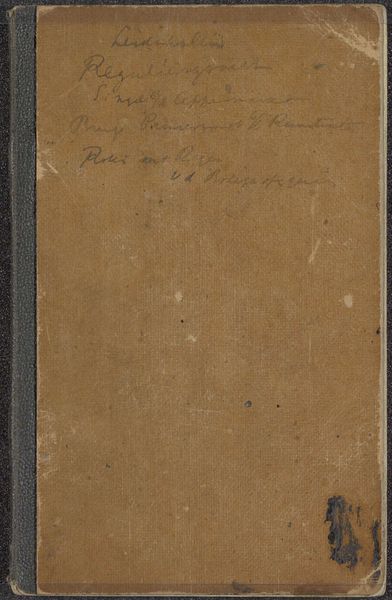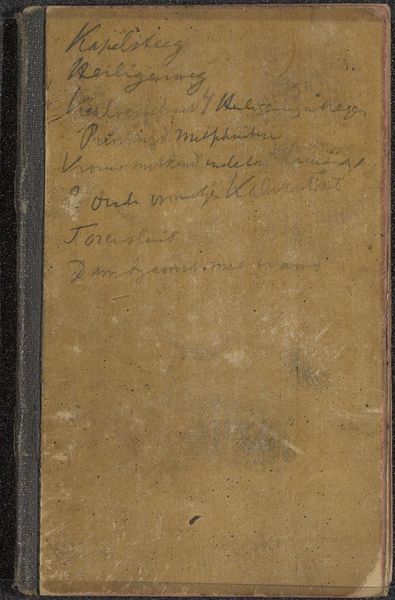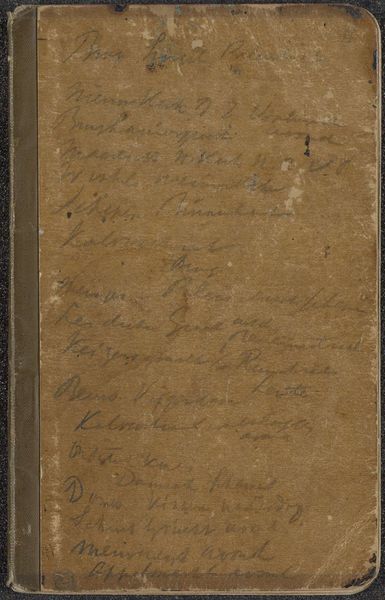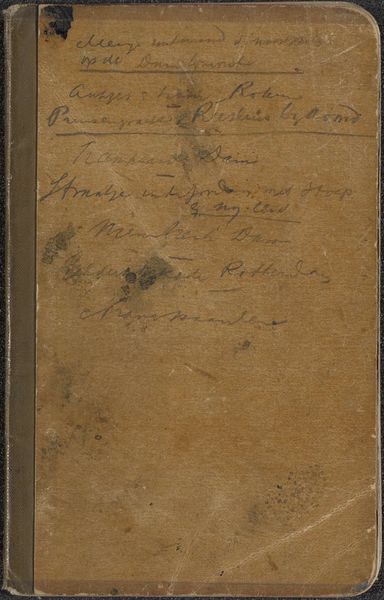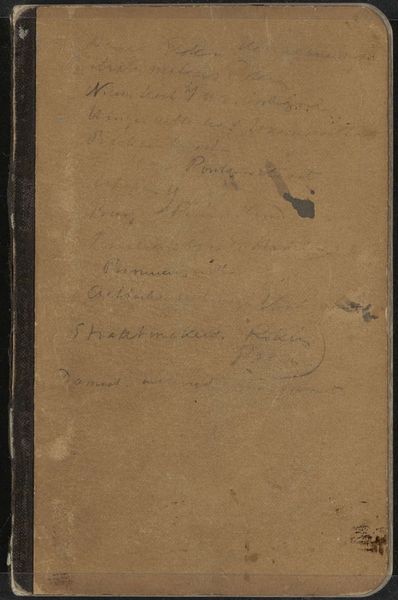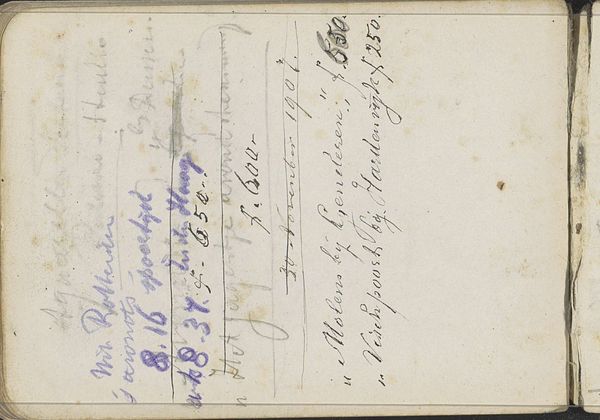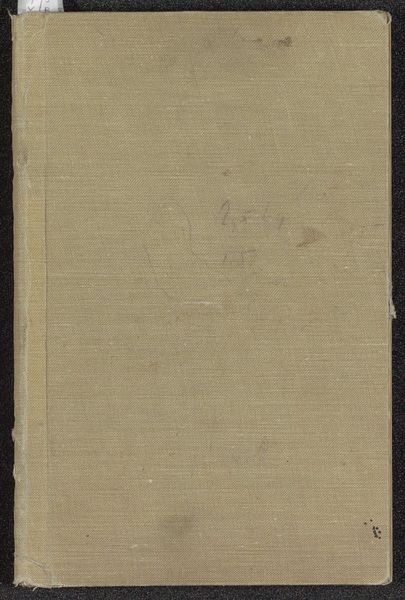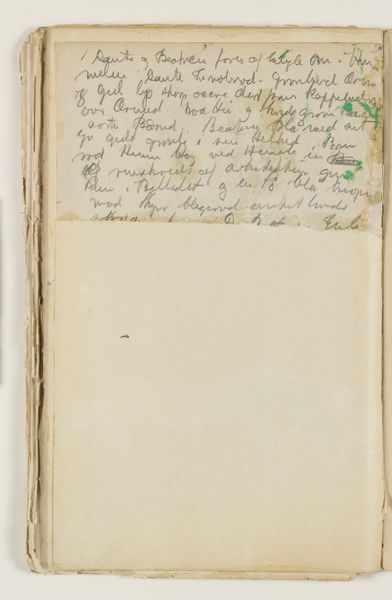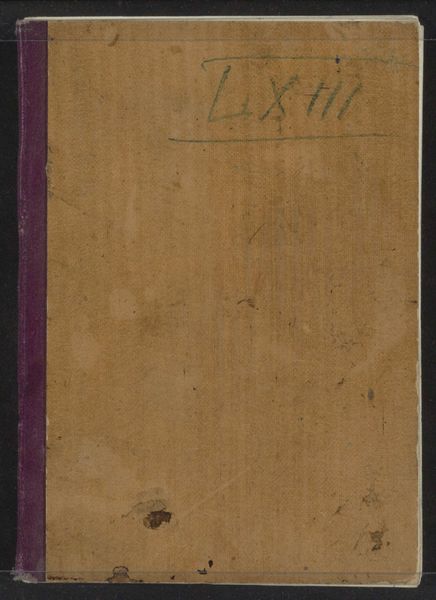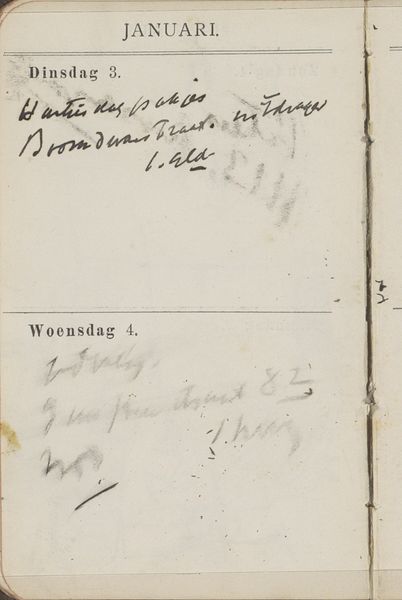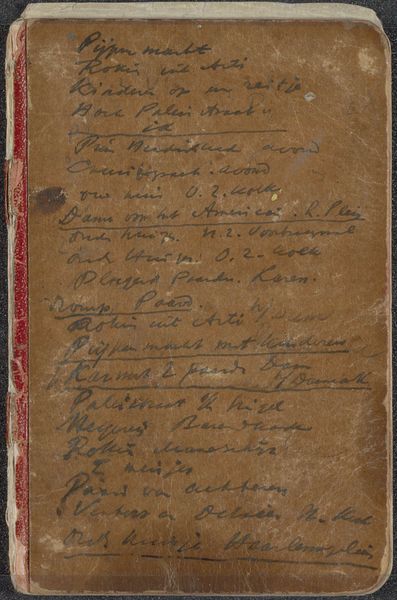
Dimensions: height 167 mm, width 104 mm, depth 7 mm, width 214 mm
Copyright: Rijks Museum: Open Domain
Editor: So, here we have George Hendrik Breitner’s “Sketchbook with 38 leaves,” created between 1893 and 1898. It's a mix of drawing, coloured pencil, watercolor, and pencil on paper. It almost feels like a found object because we're presented with the book itself, rather than the art inside. What’s your perspective on this particular piece? Curator: Well, looking at this sketchbook, I'm immediately drawn to consider Breitner's process, the journey from a fleeting observation to a finalized artwork. This book becomes a historical document, reflecting his social interactions, maybe quick sketches of bustling Amsterdam streets. Knowing Breitner, how do you think this intimate view into his artistic method impacts our understanding of Impressionism in the Netherlands at that time? Editor: That’s a really good point, I hadn't considered that. Maybe it’s less about finished artworks and more about capturing the moment and everyday life, showing that everyone had the right to capture and create art from their realities. Does that make sense? Curator: Absolutely. These pages grant access not only to his artistic skill but also to the social context he inhabited and chose to depict. Can you imagine who he met? Where he worked? This glimpse is crucial. How might a modern audience, saturated with imagery, respond differently to this than someone in Breitner’s time? Editor: I think we expect perfection now, which feels far removed from these spontaneous sketches. Something that strikes me, looking at this object: It's a direct connection to Breitner, unmediated, unlike a framed painting in a sterile gallery. Curator: Precisely. It democratizes the art experience. What do you think that writing says on the cover? Is it an address, maybe the place that it was when it was discarded? I would say that Breitner invites the modern eye to appreciate the everyday in a fresh way, valuing process and intention as much as polish. This encourages us to understand his impressionism as rooted in very specific socio-cultural circumstances and observations. Editor: That completely reshapes my thinking. It’s like a window into history! Thank you, that's so insightful! Curator: It was my pleasure. I'm delighted you're walking away with a fresh point of view on what defines "art."
Comments
No comments
Be the first to comment and join the conversation on the ultimate creative platform.
